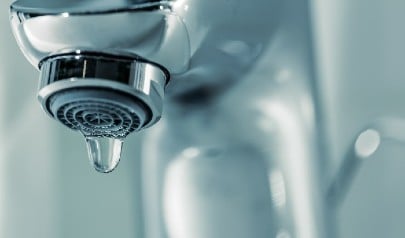This post down below on the subject of How to Prevent Bathroom Water Damage is quite fascinating. Don't bypass it.

The shower room is exceptionally susceptible for damp buildup and prospective water damages due to the regular use water in it. This article provides straightforward inspection techniques to assist identifying water damage risks.
The constant use water in the bathroom makes it extremely susceptible for damp buildup and potential water damage. By checking it regularly, you can reduce water related damages.
The complying with collection of examinations is very easy to perform and should be done once in every three months in order to keep your shower room healthy and also to stop potential water damages caused by the tub, the shower, pipe joints as well as plumbing, sinks, cupboards, and also the commode
Do not forget performing these inspections and be comprehensive while doing them. Bear in mind that these basic assessments can conserve you a great deal of cash by supplying very early signs for water damage
Sinks and Cabinets
Sinks and cabinets are exposed to moisture and humidity daily and also are often overlooked. Inspect regularly under the sink and on the kitchen counter over it. Fix any type of drip in the catch as it may suggest drain problems. Check out the sink, slow-moving draining pipelines might suggest a blocked drain. Change sink seals if they are fractured or loosened.
Tub as well as Shower
The shower and bathtub call for unique interest as well as maintenance. Check the floor tiles and also replace if broken. Make sure that there is no missing out on cement between the tiles. Inspect and also replace cracked caulking at joints where the wall surfaces satisfy the flooring or the tub. Clogged drains and also pipes problems will certainly stop the tub from drying and also might indicate significant issues below the bathtub. Seek advice from an expert immediately to stop structural damage. Take notice of discolorations or soft areas around the tub walls as they might indicate an interior leakage.
Plumbing
Signs for water damage are tough to find because most pipelines are installed inside the wall surfaces.
Pay special focus to flooring and wall surfaces moisture and also stains as they might indicate an unseen plumbing issue. Check wetness levels in adjacent rooms also.
The Toilet
The bathroom is a vulnerable water joint. Check the water lines as well as search for leakages around the toilet seat, in the pipe, and under the water storage tank. If you detect any type of indicators of dampness on the floor around the commode, look for leakages in the toilet rim and also tank seals.
Know that hanging toilet bowl antiperspirants increases the possibilities for obstructions.
Water Damage Signs In The Bathroom To Avoid Cleanup
Musty smell
This is one of the easiest signs to catch because musty smells are so odorous. The damp, earthy, moldy smell should be a big red flag. The smell will develop when moisture gets trapped in surfaces, and begins to facilitate mold growth. Leaking pipes under cabinets, inside walls, and behind shower fixtures will cause moisture to stay trapped and not dry, which will lead to mold growth and spread. As soon as you notice any musty smells in your bathroom, have it checked for hidden water damage and cleanup signs.
Visible mold
If the smell isn’t there to give it away, sometimes you will actually see mold growth. Finding mold in your bathroom is a serious problem, because mold is very harmful to your health. By the time mold growth is visible, it also means that water damage has already occurred and been present for some time. The only way the mold problem can be resolved is to find the source of the moisture and get it stopped. To safely and adequately remove mold, you need to have professionals handle the remediation. Do not waste any time in getting mold problems addressed, fixed, and sanitized so that you can protect you and your family from the many respiratory symptoms caused by mold exposure.
Damaged floors
Bathroom floors should be able to withstand some exposure to water while still remaining in good condition. However, when excess exposure or water leaks occur, they will begin to damage even the most water-resistant flooring. If you notice any cracking, bubbling, staining, or warping on your bathroom floors, there is probably a water leak somewhere causing the distortion. If you notice areas of the floor have become softer, or even have a spongy feeling, there is probably damage to the subfloor. Subflooring is typically made up of plywood. When plywood is exposed to water or moisture, it will absorb it. Once it has become saturated, the weight of the excess water will cause the wood to swell and soften. Check the floors in your bathroom frequently to catch any of these sings before they lead to damaged subflooring.
Changes on walls
When water leaks behind walls, it will cause changes in the drywall. Peeling plaster, blistering paint, and soggy wallpaper are all good indicators that excess water is building up behind the wall. Water leaking behind drywall will cause it to swell and be soft to the tough. If you start to notice gaps along the trim of your walls, or where tile meets the wall, it could also be a strong indicator that there is a leak behind the wall. Any changes, distortion, or damage on the walls should be evaluated as soon as you notice it to prevent further water damage and cleanup.

As a person who reads on Preventing Water Damage in the Bathroom, I thought sharing that piece of writing was really helpful. For those who appreciated our page please be sure to share it. I praise you for your time. Come back soon.
Go Deal